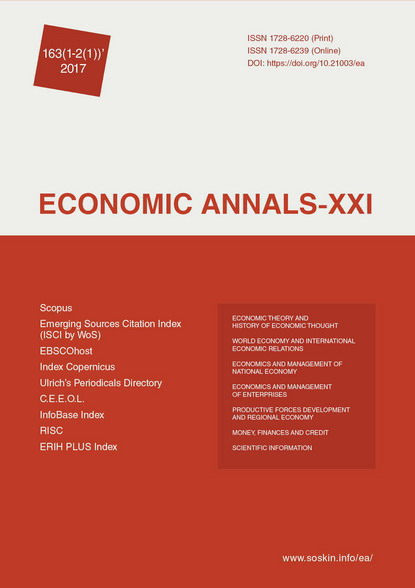Шоки сукупного попиту та рівновага платіжного балансу в залежній економіці
Shocks of the aggregate demand and balance of payment equilibrium in dependent economy
Author(s): Myroslava Chekh, Galyna SemivSubject(s): Economy, Financial Markets
Published by: Institute of Society Transformation
Keywords: Consumption; Investment; Export; Dependent Economy; Balance of Payments Equilibrium; Tradable Goods; Nontradable Goods
Summary/Abstract: Introduction. Today, academic circles are voicing an idea about the need to switch over to an alternative economic strategy prioritising the stimulation of the domestic market, because the existing potential for the development based on the export model has been exhausted. World experience and some economic realities in Ukraine induce to believe that such a strategy could be viable, although not without numerous risks. Usually, a decline in the current balance signals is the end of the ambitious experiments on demand stimulation. In such a case, it is essential to analyse the interaction of internal and external sectors of the economy, to provide an effective demand and separate balance of payment accounts. The purpose of the research is to study the interaction between different segments of the domestic market and the balance of payments in terms of the economy with a dependent production structure. Results. By using two statistical techniques, namely, the two-stage least square (2SLS) and heterogeneous VAR/VEC models, the authors of the article have found out the following: 1) the asymmetric impact of the sectors of goods QT and QN on the current account balance; 2) the growth of the sector QT is mainly due to the consumption factor, while QN stimulates mostly the investment demand; 3) the financial account is slightly dependent on domestic demand and has improved due to the growth of the domestic production of non-tradable goods. Conclusions. On the whole, our findings are in line with the theoretical framework of the dependent economy model, which implies a disaggregated structure of demand and supply.
Journal: Економічний часопис - ХХІ
- Issue Year: 163/2017
- Issue No: 1-2(1)
- Page Range: 47-51
- Page Count: 5
- Language: Ukrainian

